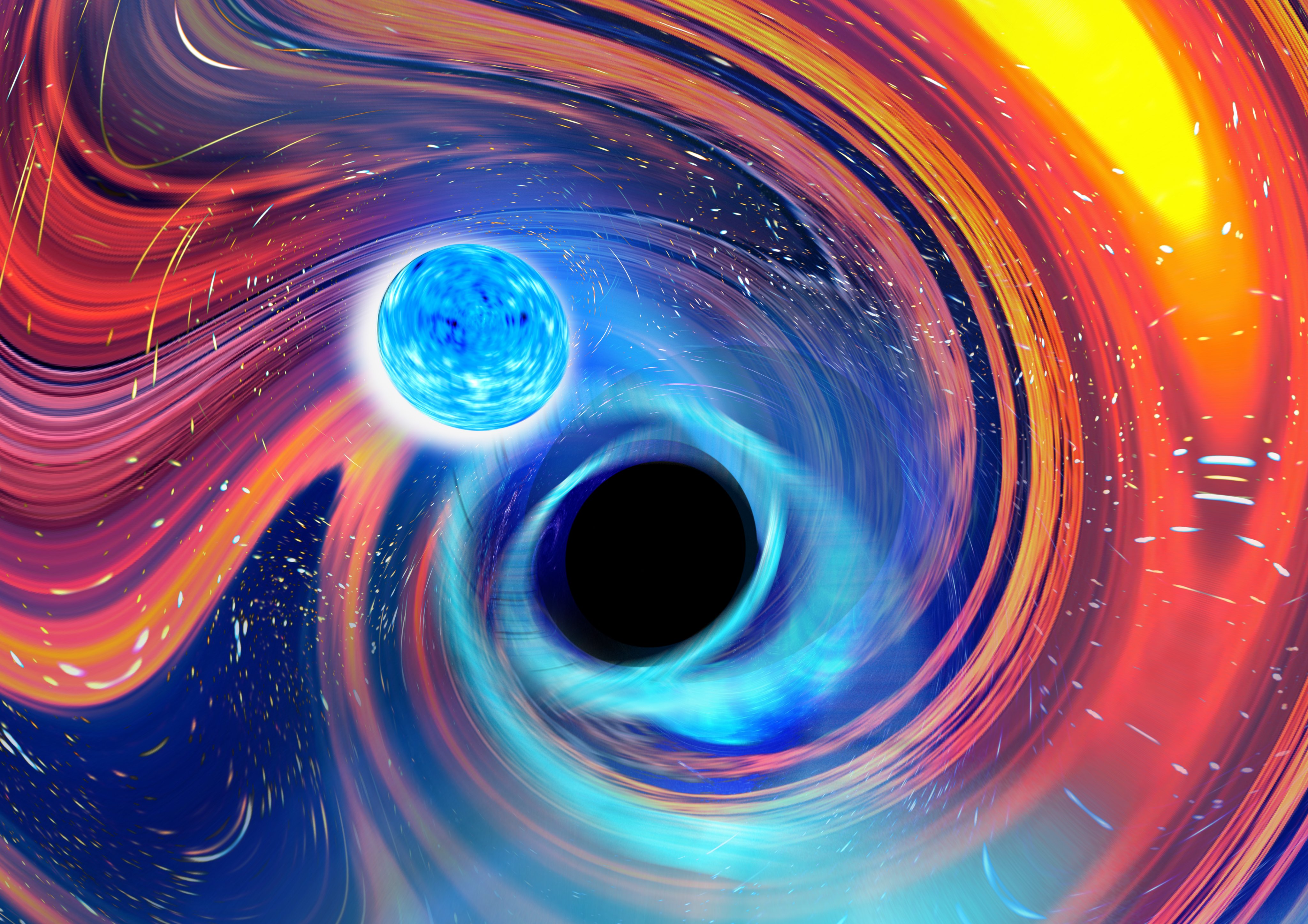

An artistic image inspired by a black hole-neutron star merger event. Credit: Carl Knox, OzGrav/Swinburne
In this series we are exploring the weird and wonderful world of astronomy jargon! You’ll never want to stop learning about today’s topic: black holes!
Ah, black holes. Basically the worst things in the universe. Nobody likes them. Nobody wants to be them. Nobody even wants to get close to them. If it weren’t for black holes, the cosmos would be a much brighter place.
The German physicist Karl Schwarzschild first discovered black holes in 1916, by total accident. He had discovered a solution to Einstein’s theory of general relativity that applied to the generic case of a single spherically-symmetric object. Buried in that math was the peculiar property that if the object was compressed below a certain threshold, it would continue to collapse to an infinitely tiny point.
A black hole.
Physicists long debated whether black holes were real, but after a hundred years we know for sure that they exist. We see X-rays pouring out of binary systems, where only one of the pair is visible. The other is a black hole, and the X-rays are caused by matter heating up as it falls in. We see stars in the center of the galaxy orbiting a massive, invisible object…a black hole. We see gravitational waves produced when black holes collide. And we even have a picture of one – well, the shadow carved out by a black hole surrounded by a ring of gas – thanks to the Event Horizon Telescope.
The “surface” of a black hole isn’t really a surface. It’s called the event horizon, and it’s really just a mathematical boundary. If you cross the event horizon, then you would need to travel faster than the speed of light to escape. Since that’s not allowed, the black holes stay black. Whatever goes in never comes out.
Astronomers have identified two different kinds of black holes: stellar and supermassive. The stellar kind are much more common. The Milky Way probably hosts a few million of them, and each one weighs only a few solar masses. The supermassive ones, however, are truly gigantic, with the biggest reaching hundreds of billions of solar masses. They are much more rare, and tend to sit in the centers of galaxies.
Black holes form from the deaths of massive stars. When giant stars run out of fuel, their cores collapse. With no other force available to oppose that collapse, the cores shrink and shrink and shrink, becoming a black hole.
In general, I would not recommend attempting to visit a black hole. If you cross the event horizon, not only will you never escape, but you will certainly meet your end. At the center of every black hole sits a singularity, a point of infinite density. When you enter a black hole, you have a finite amount of time before you reach that singularity…and total oblivion.
Hypervelocity stars have been seen before but NASA scientists have just identified a potential record-breaking…
Finding alien life may have just got easier! If life does exist on other worlds…
MSL Curiosity is primarily a rockhound. It's at Gale Crater, examining the rocks there and…
Venus is very variable. Its surface constantly changes from volcanic activity, and the difference between…
Hydrogel protection could be crucial for safe human space exploration. It’s a key problem that…
When massive stars reach the end of their life cycle, they undergo gravitational collapse and…